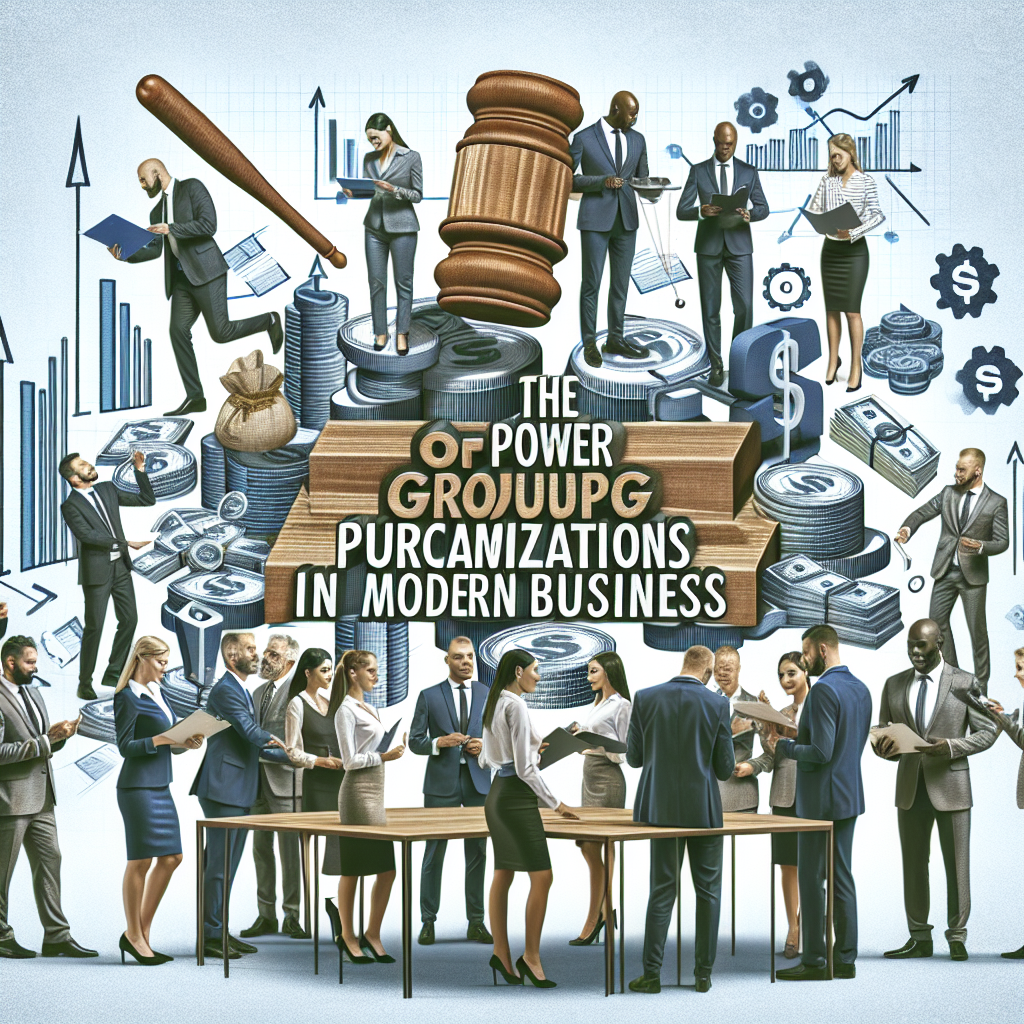Introduction
Inflation mitigation in supply chains refers to strategies aimed at minimizing the adverse effects of rising prices on operational costs. Effective inflation mitigation not only protects profit margins but also enhances overall supply chain resilience. Addressing inflation is crucial as it influences procurement costs, supplier relationships, and ultimately, customer satisfaction.
Key reasons for focusing on inflation mitigation include:
- Cost Control: Rising prices can significantly impact budgets and profitability.
- Supply Chain Stability: Fluctuations in costs can disrupt planning and execution.
- Competitive Advantage: Companies that effectively manage inflation can maintain pricing strategies that attract customers.
This article explores several key inflation mitigation strategies in supply chains, including:
- Diversification of Suppliers
- Utilization of Technology
- Long-term Contracts for Price Stability
- Inventory Management Techniques to Combat Inflation
- Cost Reduction Programs for Operational Efficiencies
- Risk Assessment Frameworks for Supply Chain Vulnerabilities
- Government Initiatives and Support for Domestic Production, such as maximizing federal grant funding for nonprofits
- Collaboration and Partnerships with Suppliers, including strategies for maximizing supplier performance
- Freight Optimization Strategies for Logistics Management amidst Rising Costs
- Financial Strategies for Inflation Protection in Supply Chains
Implementing these strategies can help businesses navigate the complexities of inflation effectively. For instance, utilizing group purchasing organizations (GPOs) can be a powerful tool in cost control, while understanding the difference between purchasing groups and group purchasing organizations can further enhance procurement efficiency (purchasing groups versus group purchasing organizations). Additionally, maintaining employee morale with appropriate break room supplies during tough economic times can also contribute to overall business resilience.
Understanding Inflation’s Impact on Supply Chains
Inflation has a significant influence on supply chain costs, creating various challenges for businesses. It directly affects:
- Material Costs: As prices rise, the cost of raw materials increases, leading to higher production expenses.
- Labor Costs: Wage inflation, which is expected to significantly influence the procurement engineer salary trends in 2025, compels companies to adjust salaries, increasing operational costs.
The ripple effect of rising prices extends beyond manufacturers to suppliers and consumers. Suppliers may raise their prices in response to increased costs, which can lead to:
- Higher Retail Prices: Consumers face inflated prices as businesses pass on their increased expenses.
- Changes in Consumer Behavior: Elevated prices might shift purchasing habits, impacting demand forecasts.
Historically, inflation trends have varied. An analysis shows that during periods of high inflation, such as the 1970s and early 1980s, supply chains adopted strategies to cope with rising costs. Businesses often turned to cost-cutting measures or sought alternative suppliers to maintain profitability.
In this context, it’s important to understand diversity, equity, and inclusion in the workplace as these factors can influence procurement strategies and supplier relationships. Moreover, businesses should be aware of common procurement terms to avoid in order to better communicate procurement’s value during these challenging times.
On the other hand, the ability to anticipate and respond to inflation effects will help organizations build resilient supply chains that can withstand economic fluctuations. Embracing supplier innovation trends could also provide businesses with a competitive edge by reducing costs and improving efficiency. Understanding these dynamics is crucial for navigating current economic landscapes effectively.
Key Inflation Mitigation Strategies
1. Diversification of Suppliers
Reducing dependency on a single supplier is crucial in the context of inflation mitigation strategies in supply chain management. A diversified supplier base can help companies adapt to fluctuating prices and availability, ultimately enhancing resilience.
Importance of Reducing Dependency
Relying on one supplier can expose businesses to significant risks during inflationary periods. Disruptions such as price hikes or supply shortages can severely impact operations. By spreading procurement across multiple suppliers, organizations create buffers against these risks.
Identifying Alternative Lower-Cost Suppliers
Companies should actively seek out alternative suppliers who offer competitive pricing without compromising quality. This exploration may involve:
- Conducting market research to identify potential partners.
- Leveraging Group Purchasing Organizations (GPOs) for better rates and conditions.
- Engaging with local vendors when feasible, which may reduce transportation costs and lead times.
Case Studies Showcasing Successful Diversification
Examples abound where businesses have successfully diversified their suppliers to mitigate inflation impacts:
- A major automotive manufacturer faced rising steel prices by shifting a portion of its steel sourcing to emerging markets, resulting in reduced costs.
- A consumer goods company experienced supply disruptions during a trade dispute. By onboarding additional international suppliers, they minimized downtime and maintained production levels.
Such strategic moves demonstrate how effective supplier diversification not only curtails risks associated with price volatility but also enhances long-term operational stability. Building robust relationships with multiple suppliers fosters adaptability, allowing businesses to navigate economic fluctuations more effectively. As you consider your own supply chain strategy, evaluating your supplier diversification can be a fundamental step in combating inflationary pressures.
2. Utilization of Technology
Technology plays a crucial role in strategies to reduce inflation within supply chain management. By improving visibility and efficiency, organizations can better handle rising costs.
1. Visibility and Efficiency
Advanced technologies such as IoT (Internet of Things) enable real-time tracking of inventory and shipments. This transparency allows businesses to respond swiftly to fluctuations in demand or supplier performance.
2. Data Analytics Applications
Leveraging data analytics can significantly improve forecasting accuracy. For instance, predictive analytics tools utilize historical data trends to anticipate market shifts, enabling proactive adjustments in procurement strategies.
3. AI in Management
Artificial Intelligence (AI) applications streamline various elements of supply chain operations. AI-driven algorithms optimize inventory levels, reducing excess stock that may become costly during inflationary periods.
The benefits of adopting these advanced technologies include:
- Enhanced decision-making capabilities through data-driven insights.
- Improved operational efficiencies that lower overall costs.
- Greater adaptability in responding to market changes.
Incorporating technology not only supports supplier diversification but also strengthens risk mitigation efforts. Organizations that embrace these innovations position themselves favorably against inflationary pressures in the supply chain landscape.
Moreover, tail spend management could be effectively utilized with the help of these technological advancements. This approach allows companies to better manage their procurement processes, especially when dealing with limited resources. In such cases, it’s essential to succeed with limited resources by embracing constraints, optimizing processes, and leveraging networks for business success.
Additionally, the role of technology extends beyond just cost management or efficiency improvement; it also encompasses areas like healthcare where essential PPE for airborne precautions is critical. Furthermore, organizations can leverage GPO membership benefits to streamline their procurement process and achieve significant cost savings.
3. Long-term Contracts for Price Stability
Long-term contracts in supply chain management serve as a crucial inflation mitigation strategy, allowing businesses to secure pricing stability amidst volatile market conditions. The advantages include:
- Price Locking: By locking in prices with suppliers, organizations can shield themselves from sudden price increases due to inflation. This predictability aids in budgeting and financial planning.
- Enhanced Relationships: Engaging in long-term contracts fosters stronger relationships with suppliers. This collaborative approach can lead to better service, priority during shortages, and potential discounts.
Strategies for negotiating beneficial long-term contracts involve:
- Market Research: Understanding current market trends and pricing helps you negotiate favorable terms.
- Bundling Purchases: Combining multiple product purchases into one contract can offer more leverage during negotiations.
- Flexibility Clauses: Including clauses that allow adjustments based on market conditions can balance risk for both parties.
Real-world examples showcase successful implementations of long-term contracts. Companies like Walmart have utilized such strategies to maintain low prices and manage supply chain costs effectively. By leveraging relationships with key suppliers under fixed-price agreements, they mitigate risks associated with inflation while ensuring consistent product availability.
This proactive approach strengthens supply chains against economic fluctuations, promoting resilience and adaptability in uncertain times.
4. Inventory Management Techniques to Combat Inflation
Effective inventory management practices are essential for inflation mitigation strategies in supply chain management. These practices help organizations adapt to rising costs and maintain efficiency.
1. Just-In-Time (JIT) Systems
JIT enables companies to reduce holding costs by receiving goods only as needed. This approach minimizes excess inventory and maximizes cash flow.
However, JIT systems come with risks. Disruptions in supply can lead to stockouts, resulting in lost sales and dissatisfied customers.
2. Safety Stock
Maintaining safety stock can protect against unexpected demand fluctuations or supply chain disruptions. This buffer stock helps ensure product availability while balancing carrying costs.
3. Demand Forecasting
Utilizing advanced forecasting techniques allows businesses to predict inventory needs more accurately. Incorporating data analytics aids in adjusting orders based on market trends and consumer behavior.
4. Cycle Counting
Regularly auditing inventory through cycle counting ensures accuracy in stock levels. This practice helps identify discrepancies early, preventing overstocking or understocking scenarios.
In addition to these techniques, adopting a strategic sourcing approach can further enhance procurement efficiency. This involves building strong supplier relationship management practices which could be supported by the best procurement software. Moreover, embracing a mindset of continuous learning and adaptation in purchasing, as illustrated by Frank Corris’s journey in mastering procurement, can significantly transform procurement strategies. Lastly, leveraging private sector group purchasing benefits can provide additional cost savings and efficiency improvements in the face of inflation.
Implementing these strategic inventory management techniques equips organizations to combat the effects of inflation effectively while enhancing operational resilience against potential disruptions.
5. Cost Reduction Programs for Operational Efficiencies
Cost reduction programs play a vital role in inflation mitigation strategies within supply chain management. These initiatives focus on enhancing operational efficiencies and minimizing waste. Implementing targeted strategies can lead to significant savings while maintaining product quality.
Key initiatives include:
-
Lean Manufacturing: This methodology emphasizes the elimination of non-value-added activities, streamlining processes to reduce costs. Companies adopting lean practices report lower operational expenses and improved turnaround times.
-
Six Sigma: A data-driven approach that seeks to improve quality by identifying defects and reducing variability in processes. Organizations implementing Six Sigma often see substantial cost reductions through increased efficiency.
-
Value Stream Mapping: This technique helps visualize processes, identify bottlenecks, and streamline operations. By eliminating waste within the value stream, companies can achieve notable cost savings.
Success stories abound in this area. A leading automotive manufacturer adopted lean principles and reported a 20% reduction in production costs within a year. Similarly, a food processing company utilized Six Sigma methodologies, resulting in a 30% reduction in waste.
These cost reduction strategies not only enhance profitability but also fortify supply chains against inflationary pressures. For instance, leveraging collective spending can drastically reduce costs while ensuring compliance-driven sourcing enhances reputation and aligns with ethical standards. Such strategies are essential not just for large corporations but also for individuals managing their daily expenses as seen in the art of frugal living.
6. Risk Assessment Frameworks for Supply Chain Vulnerabilities
Identifying vulnerabilities within the supply chain is crucial for effective inflation mitigation strategies. A comprehensive risk assessment framework can provide the necessary structure to analyze and address potential weaknesses. Key components of such a framework include:
- Risk Identification: Outline various types of risks affecting the supply chain, including economic fluctuations, supplier reliability, and geopolitical factors.
- Risk Analysis: Assess the likelihood and impact of identified risks on operations. This involves quantitative and qualitative measures to evaluate potential disruptions.
- Proactive Measures: Develop strategies tailored to mitigate identified risks. This could involve creating contingency plans, diversifying suppliers, or investing in technology for better visibility.
Implementing these steps leads to improved resilience in supply chain management. Organizations that prioritize risk assessment are better equipped to navigate turbulent economic landscapes and maintain operational efficiency. Effective risk assessment not only enhances overall supply chain integrity but also supports sustainability efforts in the face of rising inflationary pressures. As you explore further strategies, consider how robust risk management practices integrate with other inflation mitigation strategies in the supply chain.
Moreover, it’s worth noting that gaining practical experience through entry-level procurement jobs can significantly enhance your understanding of these risk assessment frameworks and their application in real-world scenarios.
7. Government Initiatives and Support for Domestic Production
Recent government actions significantly influence supply chain management and inflation mitigation strategies, particularly initiatives from the Biden Administration aimed at bolstering domestic production capabilities:
1. Investment in Local Manufacturing
The focus on local production strengthens supply chains by reducing dependency on international suppliers. This shift not only supports economic growth but also enhances resilience against global disruptions.
2. Incentives for Domestic Producers
Financial incentives and grants encourage businesses to establish or expand manufacturing operations within the country. Such support can alleviate inflationary pressures by stabilizing supply levels and fostering competition among suppliers.
3. Regulatory Frameworks
Streamlined regulations promote ease of doing business, making it attractive for companies to invest in local facilities. This regulatory support helps mitigate risks associated with fluctuating costs from foreign suppliers.
Government initiatives play a crucial role in fostering a robust domestic supply chain. By focusing on local manufacturing capabilities, organizations can better navigate inflation challenges while enhancing overall operational efficiency. Such strategies are essential components of comprehensive inflation mitigation strategies in the supply chain.
8. Collaboration and Partnerships with Suppliers
Building collaborative relationships with suppliers is crucial in today’s challenging economic environment. Such partnerships foster shared insights, allowing both parties to navigate inflation-related challenges more effectively.
Benefits of Supplier Collaboration:
- Enhanced Communication: Open lines of communication lead to better understanding of market conditions, enabling timely adjustments to procurement strategies.
- Risk Mitigation: By collaborating closely, businesses can identify potential risks early, thereby enhancing resilience against supply chain disruptions caused by inflation.
- Innovative Solutions: Joint problem-solving can result in innovative approaches that reduce costs and improve efficiency.
Examples of Successful Collaborations:
- A major automotive manufacturer partnered with local suppliers to develop alternative materials for production. This collaboration not only reduced costs but also improved sustainability practices.
- A food processing company worked hand-in-hand with farmers to ensure stable pricing and supply of raw materials. This initiative minimized the impact of fluctuating market prices on their operations.
Investing time in fostering supplier relationships not only aids in inflation mitigation strategies but also strengthens supply chain management overall. Engaging in these partnerships aligns with effective supplier diversification efforts, ultimately leading to a more resilient supply chain during uncertain times. This approach is part of a broader strategy for procurement in crisis, which emphasizes building resilience for tough times through strategic supplier collaboration and partnership.
9. Freight Optimization Strategies for Logistics Management Amidst Rising Costs
In the current economic landscape, freight optimization strategies play a crucial role in managing logistics costs. As inflation continues to affect supply chain management, organizations must adopt innovative approaches to maintain profitability.
Key components of effective freight optimization include:
-
Utilization of Freight Management Software: These tools analyze shipping routes and carrier performance, enabling businesses to select the most cost-effective options.
-
Consolidation of Shipments: By combining multiple shipments into a single load, companies can reduce transportation frequency and achieve better rates. This is one of the strategies to reduce freight costs.
-
Dynamic Routing: Adapting routes based on real-time data helps mitigate delays and avoid increased costs associated with traffic or weather disruptions. Implementing optimizing freight routing strategies can significantly enhance this process.
-
Carrier Negotiations: Establishing strong relationships with carriers allows for better negotiation of rates and terms, ultimately leading to reduced transportation expenses.
The implementation of these strategies not only provides immediate cost savings but also strengthens resilience against inflationary pressures. For instance, adopting effective sourcing strategies can enhance the procurement process, leading to further cost reductions. Similarly, focusing on procurement optimization can streamline operations and improve overall efficiency. Organizations that prioritize freight optimization can navigate rising costs more effectively while ensuring timely deliveries and maintaining customer satisfaction.
10. Financial Strategies for Inflation Protection in Supply Chains
Inflation can severely impact supply chain costs, making it essential to implement effective inflation mitigation strategies. A key approach involves utilizing financial instruments designed to hedge against commodity price fluctuations. Understanding these tools and their applications can significantly enhance supply chain management.
Key financial instruments include:
- Futures Contracts: Agreements to buy or sell a commodity at a predetermined price, providing price certainty.
- Options: Contracts that give the right, but not the obligation, to buy/sell at a specific price, allowing flexibility in volatile markets.
- Swaps: Agreements to exchange cash flows or payments based on different underlying assets, useful for stabilizing costs.
Hedging strategies applicable to supply chains encompass:
- Natural Hedging: Aligning revenue and expenses in the same currency or commodity type to offset risks.
- Financial Hedging: Using derivatives and other financial products to counteract potential losses from price changes.
Implementing these strategies not only facilitates effective risk mitigation but also enhances resilience against inflationary pressures. Adopting such measures prepares businesses for fluctuating market conditions while maintaining operational stability.
Conclusion: Building Resilient Supply Chains Against Economic Fluctuations
Creating resilient supply chains is crucial in the face of economic fluctuations. Inflation mitigation strategies in supply chain management can significantly enhance your organization’s ability to withstand market pressures. Key aspects to focus on include:
- Proactive Planning: Implementing diverse supplier networks minimizes risk and dependency.
- Technological Integration: Leveraging data analytics and AI improves visibility and decision-making.
- Collaborative Relationships: Building partnerships with suppliers fosters resilience and adaptability.
Adopting these strategies not only prepares your supply chain for potential disruptions but also promotes long-term sustainability. Investing in robust systems now ensures that your organization can thrive amid uncertainty, ultimately securing a competitive edge in today’s dynamic market landscape.





